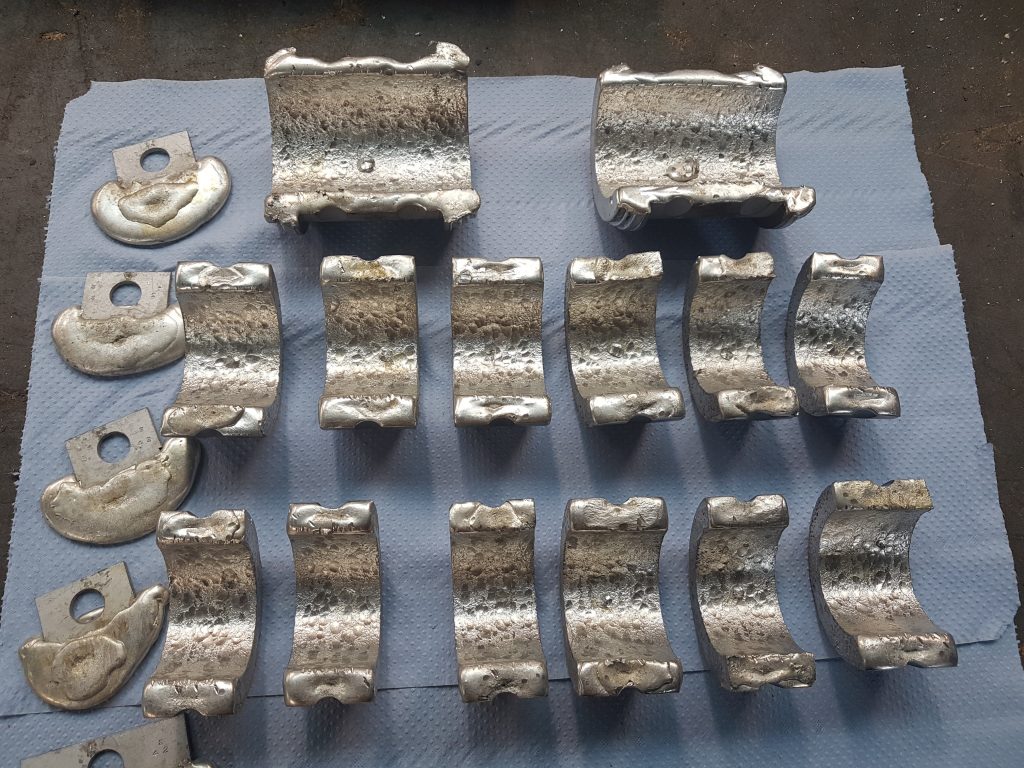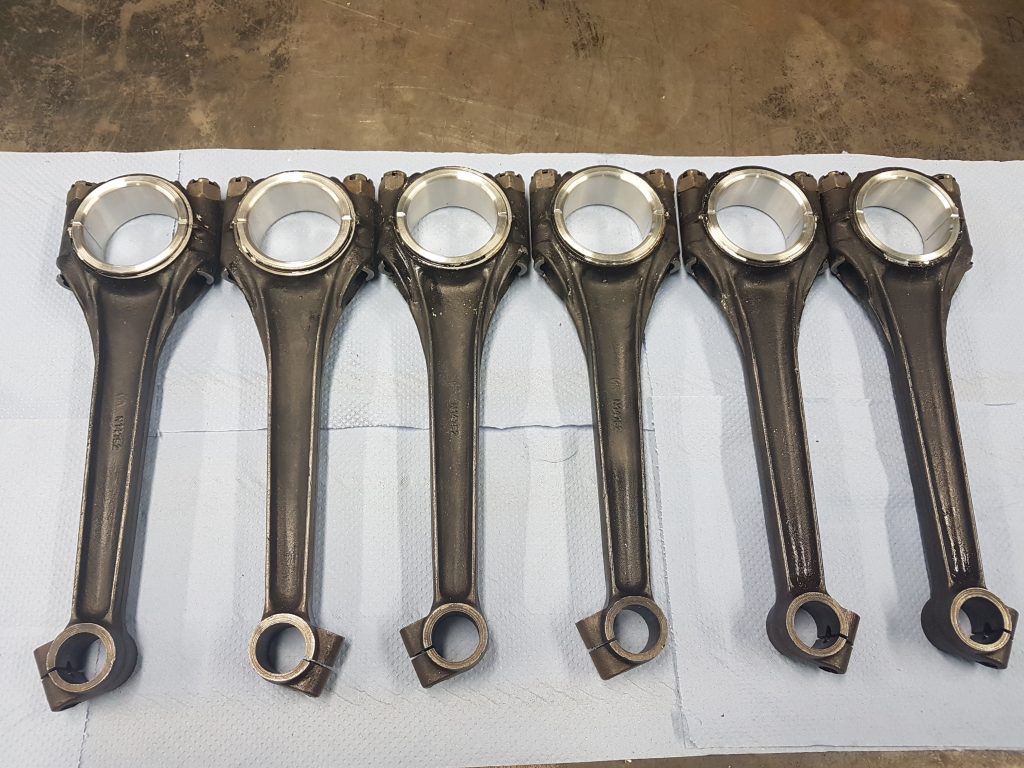
FVR has written a brief description on white metal bearings, for both the novice and experienced in their nature and the demanding processes required when making a strong bearing.
After many years supplying white metal bearings to the restoration trade and private enthusiasts the following information on white metal bearings may be of interest to all enthusiasts.
A white metal bearing is a soft, anti-friction coating (Of white metal) on a hard backing either bronze or steel. Produced to protect the crankshaft from the wear caused by abrasive particles carried around in oil, these abrasive particles embed into the white metal coating, below the surface, thus protecting the crankshaft.
White metal bearings have many important characteristics. They can stand up to high momentary overloads without fracturing (i.e. during oil surge). They will conform if misalignment occurs helping prevent sudden catastrophic failure and (though the oil should always be as clean as possible) plain bearings are less demanding in respect of clean oil. It is important to note that plain white metal bearings are expected to have a long life, one set of our bearings have completed over 60,000 hard competition miles.
The below illustration shows important components of the white metal bearing;
(This is a composite drawing – some of the features shown may not appear in any one bearing)
Tinning of the white metal bearing shell prior to lining the shell with white metal is imperative, when there is not a consistent bond between the lining and the bearing back oil penetration becomes possible, this allows an insulating oil film to operate behind the white metal lining, hampering conduction of frictional heat, leading to wiping of the lining or total failure. For reliability it is essential that the white metal lining is firmly bonded to the shell all over the bearing surface, this provides support across the entire, soft, bearing surface and ensures maximum heat transfer. There are ways of testing the bond between shell and lining. Including;
The ring test – Strike the bearing with a rod (or coin) and listen to the sound that is produced, a dull sound indicates a poor bond and a clear ringing suggests a good bond. There is an obvious problem in deciding the standard, but as a rule of thumb investigate further all dull sounds.
Dye-penetrant – Dye penetrant a red, searching fluid is applied and left for 15 minutes then excess dye is wiped from the surface. Coat the surface in the second aerosol, a powder, and inspect the bearing surface. This method will only indicate cracks and although it may be useful at joint or end faces it will not show defects below the surface of the white metal. A dye penetrant kit can be purchased reasonably cheaply.
The HOYT bondmeter – The simplest method of bond testing and the most reliable, we regularly check our bearings in this manner. The bearing would preferably have a clean surface, a current is passed through the bearing, showing a successful bond behind the coating of white metal, the current passing into the bearing can be controlled by one knob on the bondmeter and another adjusts the meter needle to a convenient zero position.
At our company the first step is always identifying what work is required, the crankshaft is crack tested, then measured for straightness and ovality. If necessary the mains and big ends are ground and polished the minimum to clean- if the crankshafts are within tolerance we simply polish them.
Next the main bearings, we check the bearings in their housing using marking blue to check contact in the housing and feeler gages to check nip. If there’s no nip (material on the butt faces of the bearings which make them oversize to the housing and a snug fit), then there will be little contact between the main bearing and the housing. This reduces heat transfer and can cause unnecessary strain on the white metal. We measure the main bearing housing for ovality- any more than 0.010” and serious consideration should be made to line boring the housings and manufacturing new bronze or steel bearing backs. Less than 0.010” and we proceed with the next step, casting.
The bearings are painted in a heat resistant paint; this prevents tin sticking on non-bearing surfaces, reducing the need for excessive filing which can change the shape of the bearing back. Then the old white metal is run out, this goes straight in the bin. We only use brand new ingots of Hoyt 11R and 11Z3 White metal.
Once the old metal is gone the bearing surface must be clean, achieved with a combination of wire wheels. Finally before casting the bearing surface is tinned. Whilst the bearing are being cleaned and prepared for pouring the moulds and pots must be heating, to keep everything at a similar temperature. Moulds are selected to suit the sides and backs of bearing backs, a core is selected to optimize the white metal on the inside of the bearing without waste. Meanwhile pots with the required white metal are heating from the very beginning. The metal is poured and the bearing left to cool.
A process of vital importance is the fitting of the newly cast white metal bearing, it must be cleaned to remove flash, drilled, rough bored and grooved before being painstakingly fitted to the housing, using feeler gauges to check the nip, the bearing must have white metal, slowly, removed from the butt faces to allow the optimum fit in the housing.
Finally to complete the process the bearings must be line-bored. This involves setting up the block on a specialist machine and aligning the boring bar with the centreline of the main bearing tunnel, this process can take hours. The bearings are machined, 0.040” to 0.0005” increments removed, to test for size and finish and to ensure all bearings fit the crank without the need for further scraping. Once all sides, thrusts, radius and bores are cut the bearings are de-burred and the crankshaft trial fitted.
For any friendly guidance concerning your white metal bearings, for any advice concerning their design or suitability or any assistance with machining, assembly, manufacture or redesign then please do not hesitate to contact us at FVR.
